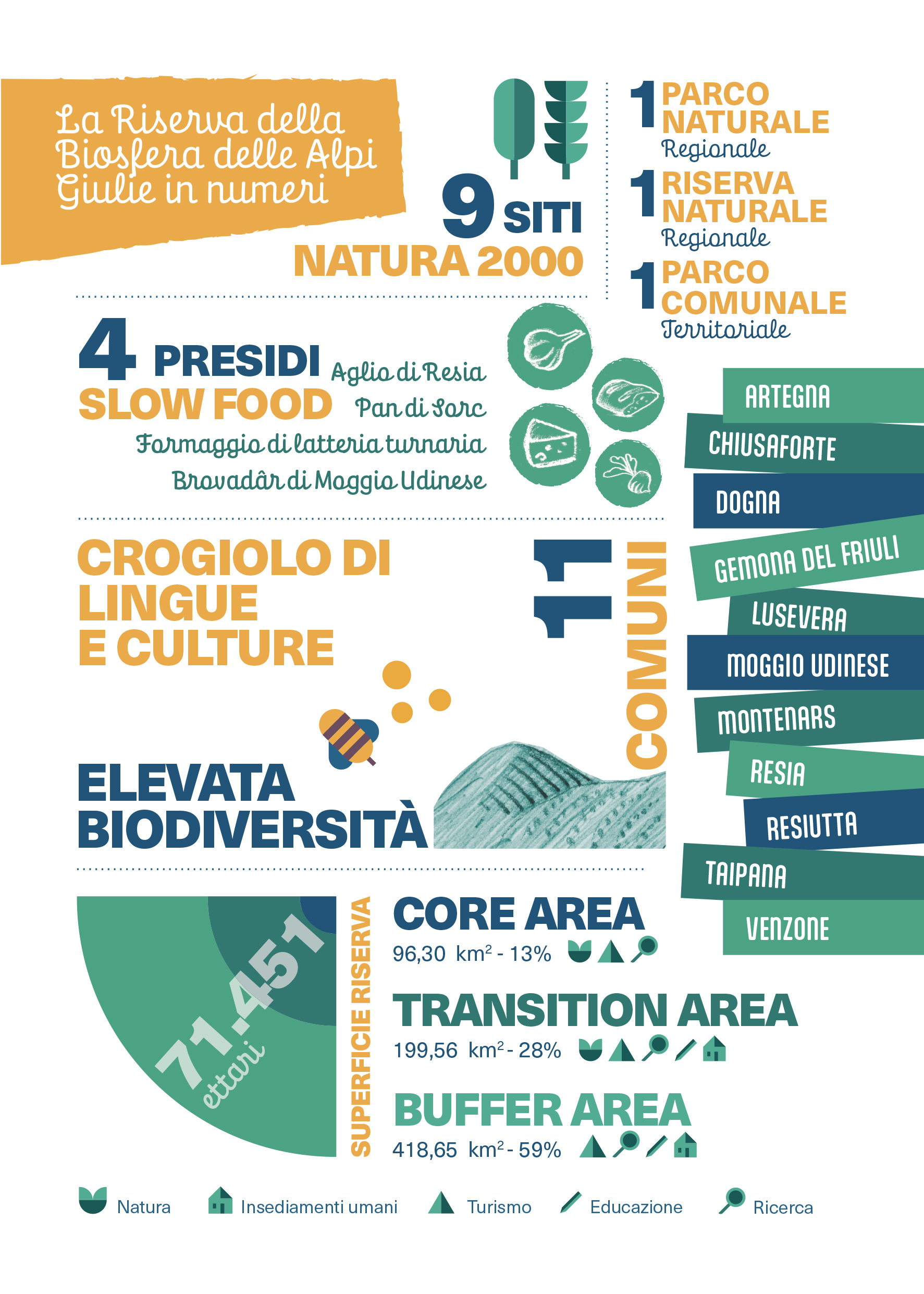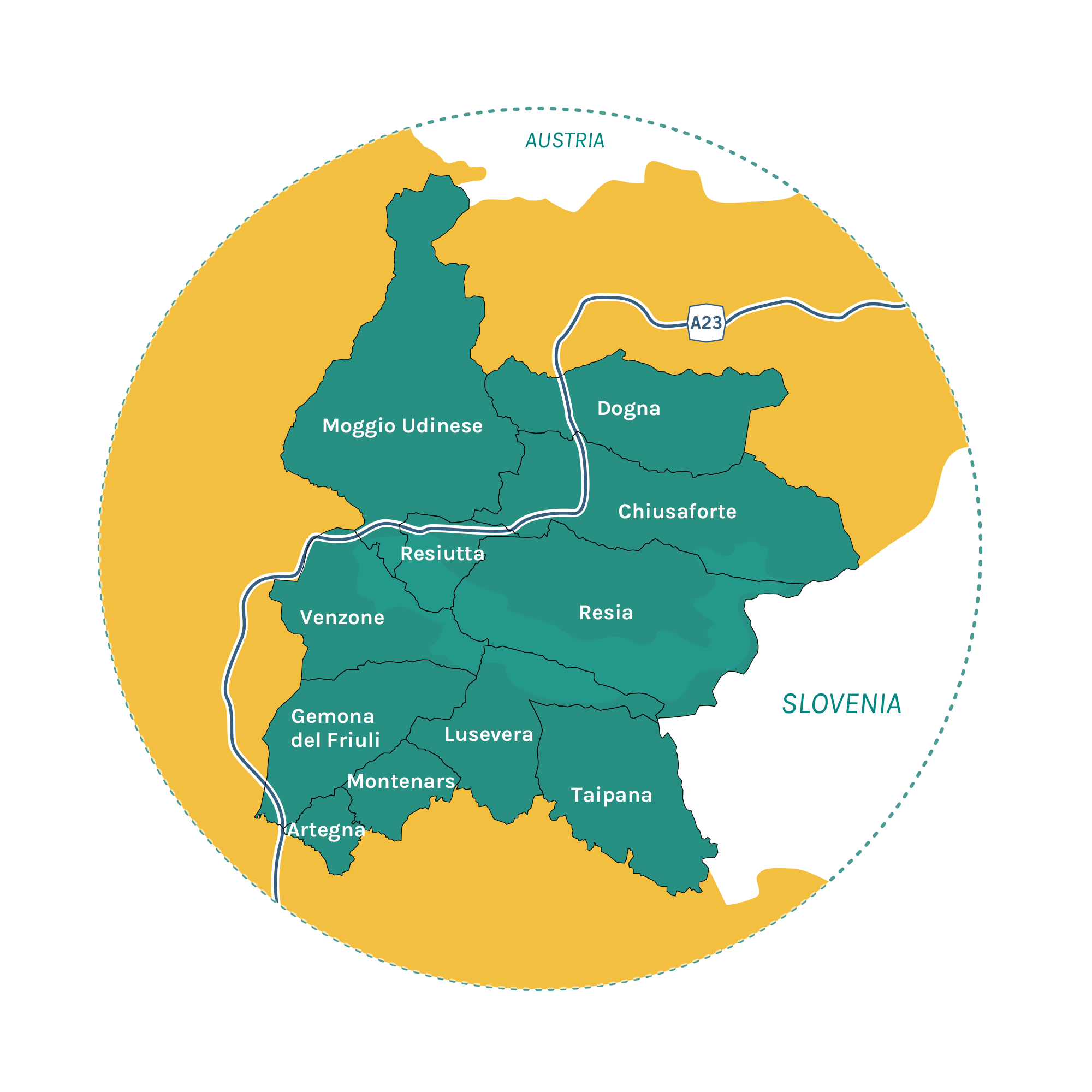THE TERRITORY

CENTRAL AREA (CORE)
BUFFER ZONE (BUFFER)
TRANSITION AREA (Transition)
L’area candidata contiene una delle due grandi aree protette regionali e confina con l’area MAB slovena Alpi Giulie già istituita, di quasi 2.000 km2. Le due aree MAB unite portano ad una dimensione di quasi 300.000 ha. Interessa i territori di 11 Comuni: Artegna, Chiusaforte, Dogna, Gemona del Friuli, Lusevera, Moggio Udinese, Montenars, Resia, Resiutta, Taipana e Venzone.
- SURFACE AREA OF THE BIOSPHERE RESERVE – 714.51 KM2 100%
Zoning takes into account both the planimetric development and the elevation breakdown of the different environments, ecosystems and inhabited landscapes, consistent with the territorial layout.
- CORE AREA – 96,30 KM2 13%
Long-term protection areas (Core Areas) are defined starting from existing protected areas and identified where legislation envisage the greatest protection, where habitats of primary interest have been identified as well as areas where there is a high level of production of ecosystem products. Such areas correspond to RN areas of the Julian PreAlps Nature Park and the Val Alba Nature Reserve. These reach the national border with Slovenia, in contact with the existing MAB area, close to the Canin mountain range (landscapes of rocky and snowy environments, Karst landscapes, forest landscapes).
- BUFFER AREA – 199,56 KM2 28%
Buffer Zones consist of RG areas of the Park, the casere (cheese farms) and high-altitude meadows, areas occupied by forests and rural landscapes with fields and pastures. These are areas mainly used for historical and/or currently, agro-forestry purposes.
- TRANSITION AREA – 418,65 KM2 59%
Transition areas are landscapes within inhabited valleys, settlements on slopes and urban conurbations in foothill areas, including the town centres of Venzone and Gemona.

